Windows 10 does not autorun programs. Where is the startup folder located? Adding a program to startup via a folder
In Windows 10, as in previous versions, it is possible to add programs to startup to launch them from the start of the operating system (OS). Adding an application to startup can be useful, but there are also negative consequences to this action.
Each new auto-loading application slows down your computer. This explains that after installation Windows performance 10 is impressive, but over time, the OS starts to slow down, especially when you turn on the computer. This is due to the numerous programs added to startup.
Custom Windows Startup
In order to remove or add a program to autorun, you need to know where autorun is located in Windows 10. There are two types of automatically loaded applications, consider the first one. This folder contains application shortcuts that will be automatically launched immediately after the system boots.
Where is startup in windows 10
The Startup folder in Windows 10 is located in one of the following paths:
- "C: \ Users \ User_name \ AppData \ Roaming \ Microsoft \ Windows \ Main menu \ Programs \ Startup" - autorun a specific user;
- "C: \ ProgramData \ Microsoft \ Windows \ Main Menu \ Programs \ Startup" - for all users.
Advice! For quick access to the Startup folder of the current user, start the Run dialog box (by pressing Win + R) and enter the command shell: Startup.

How to add and remove programs from it
The purpose of the folder is to allow the user to manage the Windows 10 AutoPlay list just like a regular folder on a computer.
To add an application to startup, you just need to move the program shortcut to this folder. And by removing the shortcut from the folder, the program is automatically removed from autorun.

System startup in Windows 10
Also, there is another place with a list of automatically launched applications. These are special sections in Windows registry 10. They are mainly used by developers, but the user also has access to them.
Where they are
The registry is started by the regedit command entered in the Run dialog box (Win + R). Two registry branches are responsible for autoloading:
- HKEY_CURRENT_USER \ Software \ Microsoft \ Windows \ CurrentVersion \ Run (the current user is automatically loaded here);
- HKEY_LOCAL_MACHINE \ Software \ Microsoft \ Windows \ CurrentVersion \ Run (autoload all users).
How to remove or add a new program there
You can remove a program from autorun by selecting the appropriate line and calling the "Remove" command from the context menu.

To enable the application to autostart you need:

Startup management in Task Manager
The Windows 10 Task Manager also contains information about startup programs. In it, you can view the entire startup list and disable the selected programs, you will not be able to add a program in this way.
To manage the autorun list you need:
- Call the task manager (by pressing Ctrl + Shift + Esc) and open the "Startup" tab, which contains a list of programs and data on their impact on the operating system performance.
- Click right key to disconnect from startup, view location and other actions with the program.

Video instruction
This video will help you to clearly see information about startup.
Output
Although there is no direct relationship between the applications loaded at Windows 10 startup and overall performance, they significantly affect the OS boot speed. Fortunately, Windows 10 has several simple ways remove and add applications to startup.
When you connect removable media such as CD, DVD, Memory stick and USB stick to your computer, a pop-up window called "AutoPlay" appears, which automatically detects the type of removable device and offers you a few standard actions. If you find it annoying, you can always turn it off, for which I will give instructions in this article. And also how to enable or configure it in Windows 10.
How to enable or disable autoplay in Windows 10
I will show you three ways to do this in Windows 10. The first way is done through the menu Start> Settings> Devices... Select AutoPlay on the left side of the window, and you will see the "Use AutoPlay for all media and devices" radio button, which you can turn off or turn on if necessary.
In addition, in the same window there is a section "Selecting default parameters", where you can configure autorun separately for each type of device or a specific device (connected earlier). It can be a removable media (flash drive), memory card, or your smartphone, for which you can set the parameter from the following options:
- Take no action
- Open folder to view files (Explorer)
- Asking every time
- Configure this media for Reserve copy(File history)
- Configure storage options (Options)
This way you can disable the option for all media and devices (master switch), and at the same time configure so that it only works with specific device or certain types.
You can also hold down the Shift key and connect the device to open the autorun window (regardless of the settings).

The second way is to take finer control over some types of media, such as CD, DVD. Blu-ray, etc. To do this, open the control panel. In the "view" option, select "large icons" and click Autoplay.

Check (or uncheck) the "Use autorun for all media and devices" checkbox to enable / disable the option. Scroll down, and just like in the previous part of the article, you can set the default action for each type of media and device. At the very bottom, after all the parameters and settings, you will see the "Restore defaults" button, by clicking on it, you will return all values to their original state.
The autorun settings windows are almost identical in Windows 7, 8 and 10. But unlike Windows 7, in Windows 8 and 10, a few more items have been added with settings for such types of media as camera memory and removable drives.
For most users, the 2 methods I mentioned above are quite sufficient to disable or configure autorun to suit their requirements. But if this is not enough for you, or you want to disable autorun for other users on the same computer, you can do it with.
To do this, open the Run window (Win + R) and enter "gpedit.msc". Under Computer Configuration, select Administrative Templates> Windows components> Autorun Policies.

In the right pane, find and click "Disable autorun", after which a window will open where you need to switch the "Not configured" option to "Enabled". Next, select "All devices" to disable autorun on all devices, or "Drives for CD-ROMs and devices with removable media", respectively.

As you can see, turning off autorun is quite easy, even for a novice user. However, it should be noted that the safest and most convenient option is "Ask every time" if you prefer to keep autoplay on. So that actions with connected media are not taken automatically.
Good afternoon, dear readers, and also to all those who accidentally wandered here. Not so long ago, we examined and what it is eaten with, if you have not read it, then be sure to check it out. And today I want to tell you about where the autorun of programs and applications is located in the operating system. Windows 10... Let's start with.
For the time being, we don't even think about what Windows is, until suddenly our system starts to "lazy" and very hard to "think", although, it would seem, just yesterday everything started up once or twice.
The fact is that the longer we use the computer, the more we install the software we need, the more likely it is that all or most of these programs climb into startup and run together with the system, whether we like it or not. And this is the consumption of Windows health resources.
Where in Windows 10 startup (autorun) programs
To disable programs from startup, we need to find it first. And for this we have to launch the "Task Manager". It opens as in the previous ones. Windows versions keyboard shortcut Ctrl + Shift + Esc.
If a " Task Manager"(Task manager) opened in minimized mode, then click in the lower left part of the window on the" Details "button, then go to the" Startup "tab.

Here is a list of those programs that run together with 10, if there are a dozen or more of them, then they most likely negatively affect the operation of your system. Therefore, I advise you to disable all these programs. To do this, move the cursor over a specific program and click "Disable" in the lower right corner.

Important! If you do not know what this or that program is responsible for, then they should be turned off individually, and not in a group, so as not to get confused at all - what if you turn off something vital for yourself. The changes will take effect, of course, after the system is rebooted.
How to add a program to Windows 10 startup
To add a program or application to Windows autostart 10, you need to open the folder " Startup»In the following ways.
- Method number 1.
C: \ Users \ "Your Name" \ AppData \ Roaming \ Microsoft \ Windows \ Start Menu \ Programs \ Startup
By default, this folder is hidden, I will tell you how to make it visible in one of the following articles, but for now:
- Method number 2.
If the Startup folder does not open, then open the Run dialog box with the keyboard shortcut Win + R.

After that we write there:
shell: startup is for a specific user
shell: common startup is for all Windows users
The Startup folder will open. Perhaps there will be shortcuts to those programs that are already loaded with the system. To add a program to autorun you need.
There are Windows applications that, when installed, "consider it their duty" to quickly register in the autorun: "I, they say, is the most important thing here - where I want, I move in there." And the fact that the accumulation of auto-starting programs turns the computer into a turtle, which brings users to the "white heat", the developers of such products do not care. But it worries us.
From "System Configuration" to "Task Manager"
If you switched to using windows 10 after Windows 7, then for sure remember that in the "seven" the startup control was in the utility " system configuration"(Msconfig.exe). In the top ten it became a little closer to the user - it moved to “ Task Manager". The section that lists applications that start working with Windows is called "".Capabilities " Task manager"In terms of control over autorun are very limited: only some of the elements are displayed here - the most basic. In addition, it is impossible to delete anything with this tool - you can only disable it, open the location of the file in Explorer, view its properties and find information about it on the Internet.
Also, it is not shown here exactly where the file autorun is registered (and there are dozens of such places in Windows), so the Task Manager is not suitable for a full system cleaning.
Top startup locations in Windows 10
The commands and shortcuts for automatic file launch in Windows 10 are located in the startup and task scheduler folders, as well as in many areas system registry... Below is an incomplete list of such places:Folders
- % allusersprofile% \ Microsoft \ Windows \ Start Menu \ Programs \ Startup- designed to store shortcuts to applications that run under the accounts of all users.
- % appdata% \ Microsoft \ Windows \ Start Menu \ Programs \ Startup- the same, but for account active (current) user.
- % SystemRoot% \ Tasks and % SystemRoot% \ System32 \ Tasks- task scheduler folders containing scheduled tasks.
Registry
The main branches of autorun (the HKLM section contains parameters that apply to the system as a whole - for everyone, in HKCU - only for the current user):
- HKLM (HKCU) \ SOFTWARE \ Microsoft \ Windows \ CurrentVersion \ Run
- HKLM (HKCU) \ SOFTWARE \ Microsoft \ Windows \ CurrentVersion \ RunOnce
- HKCU \ Software \ Microsoft \ Windows NT \ CurrentVersion \ Windows \ Load
- HKLM (HKCU) \ SOFTWARE \ Microsoft \ Windows \ CurrentVersion \ Policies \ Explorer \ Run
- HKLM \ SOFTWARE \ Microsoft \ Active Setup \ Installed Components
- HKLM \ Software \ Microsoft \ Windows NT \ CurrentVersion \ Windows \ IconServiceLib
Starting Windows and logging into an account:
- HKLM \ System \ CurrentControlSet \ Control \ Session Manager \ BootExecute
- HKLM \ System \ CurrentControlSet \ Control \ Session Manager \ SetupExecute
- HKLM \ System \ CurrentControlSet \ Control \ BootVerificationProgram \ ImagePath
- HKLM \ System \ CurrentControlSet \ Control \ ServiceControlManagerExtension
- HKLM \ System \ CurrentControlSet \ Control \ Session Manager \ Execute
- HKLM \ SYSTEM \ Setup \ CmdLine
- HKCU \ SOFTWARE \ Policies \ Microsoft \ Windows \ Control Panel \ Desktop \ Scrnsave.exe
- HKCU \ Control Panel \ Desktop \ Scrnsave.exe
- HKLM \ Software \ Policies \ Microsoft \ Windows \ System \ Scripts \ Startup
- HKLM \ Software \ Policies \ Microsoft \ Windows \ System \ Scripts \ Logon
- HKLM \ SOFTWARE \ Microsoft \ Windows NT \ CurrentVersion \ Winlogon \ Shell
- HKLM \ Software \ Microsoft \ Windows \ CurrentVersion \ Policies \ System \ Shell
Components and extensions Windows explorer(Explorer.exe)
- HKLM (HKCU) \ SOFTWARE \ Classes \ Protocols \ Filter
- HKLM (HKCU) \ SOFTWARE \ Classes \ Protocols \ Handler
- HKLM (HKCU) \ SOFTWARE \ Microsoft \ Windows \ CurrentVersion \ Explorer \ SharedTaskScheduler
- HKLM (HKCU) \ SOFTWARE \ Microsoft \ Windows \ CurrentVersion \ Explorer \ ShellServiceObjects
- HKLM (HKCU) \ SOFTWARE \ Microsoft \ Windows \ CurrentVersion \ ShellServiceObjectDelayLoad
- HKLM (HKCU) \ Software \ Microsoft \ Windows \ CurrentVersion \ Explorer \ ShellExecuteHooks
- HKLM (HKCU) \ Software \ Classes \ * \ ShellEx \ ContextMenuHandlers
- HKLM (HKCU) \ Software \ Classes \ Drive \ ShellEx \ ContextMenuHandlers
- HKLM (HKCU) \ Software \ Classes \ * \ ShellEx \ PropertySheetHandlers
- HKLM (HKCU) \ Software \ Classes \ AllFileSystemObjects \ ShellEx \ ContextMenuHandlers
- HKLM (HKCU) \ Software \ Classes \ Directory \ ShellEx \ ContextMenuHandlers
- HKLM (HKCU) \ Software \ Classes \ Directory \ Shellex \ DragDropHandlers
- HKLM (HKCU) \ Software \ Classes \ Directory \ Shellex \ CopyHookHandlers
- HKLM (HKCU) \ Software \ Classes \ Directory \ Background \ ShellEx \ ContextMenuHandlers
- HKLM (HKCU) \ Software \ Microsoft \ Windows \ CurrentVersion \ Explorer \ ShellIconOverlayIdentifiers
- HKLM (HKCU) \ Software \ Classes \ Folder \ ShellEx \ ContextMenuHandlers
- HKLM \ System \ CurrentControlSet \ Services
Dynamically linked libraries (dll):
- HKLM \ SOFTWARE \ Microsoft \ Windows NT \ CurrentVersion \ Windows \ Appinit_Dlls
- HKLM \ System \ CurrentControlSet \ Control \ Session Manager \ KnownDlls
Printing system monitors:
- HKLM \ SYSTEM \ CurrentControlSet \ Control \ Print \ Monitors
Network components:
- HKLM \ SYSTEM \ CurrentControlSet \ Control \ NetworkProvider \ Order
- HKLM \ SYSTEM \ CurrentControlSet \ Control \ SecurityProviders \ SecurityProviders
- HKLM \ SYSTEM \ CurrentControlSet \ Control \ Lsa
- HKLM \ System \ CurrentControlSet \ Services \ WinSock2 \ Parameters \ Protocol_Catalog9 \ Catalog_Entries
- HKLM \ System \ CurrentControlSet \ Services \ WinSock2 \ Parameters \ NameSpace_Catalog5 \ Catalog_Entries
Debuggers:
- HKLM \ Software \ Microsoft \ Windows NT \ CurrentVersion \ Image File Execution Options
- HKLM (HKCU) \ Software \ Microsoft \ Command Processor \ Autorun
- HKLM (HKCU) \ SOFTWARE \ Classes \ Exefile \ Shell \ Open \ Command \ (Default)
This list contains only those areas where malware is most likely to register and where garbage often accumulates. To create complete list Windows 10 startup would take a lot more space. But you and I don't need it, because looking through each section through the registry editor is too time consuming. For this, there are applications - automatic download managers. I will tell you about the best of them a little later, first let's figure out what can and cannot be removed from there.
What can be removed from autorun, and what is better not to touch
In order to speed up the launch of Windows and increase the speed of the PC, it is advisable to remove from startup what you (and the operating system!) Do not use all the time and which is more rational to start manually.However, you cannot remove everything. It is important to leave:
- Antivirus and other security programs.
- Hardware monitoring and backup tools (if you use).
- Device driver components (otherwise hardware problems may occur).
- Programs that you have been using since the system boots.
- Application update utilities (important for security).
- Anything you don't know the purpose of. If you suspect that an item registered in autorun is harmful, check its file with an antivirus. And if it's safe, leave it in place.
The rest can be turned off. If after restarting the PC there are no problems, the disabled items can be deleted (the files they run will remain in place).
And now - about the programs.
AnVir Task Manager
A nVirTaskManager – free tool manage Windows startup, processes and services with an emphasis on security. Helps fight active viral infection, prevents attempts malware lock the system, and also speeds up the boot and operation of the computer.
The application does not require a deep understanding of system processes and security principles, therefore it is recommended for ordinary users.
It is necessary to run AnVir Task Manager (as well as other similar utilities) as an administrator.
All startup items are displayed on the first tab of the same name, AnVir Task Manager. On the left side of the upper half of the window, registry keys and folders are listed; on the right - their contents - shortcuts and parameters with detailed information: what launches, where the file is located in the system, which application belongs to.
The most interesting thing here is the percentage estimate of the risk (potential harmfulness) of each object. But keep in mind that not always a high risk (red zone) indicates that you have a virus in front of you. Rather, it is done to grab the user's attention.
The reason why AnVir Task Manager considered the object to be suspicious is given at the bottom of the window on the “ Properties».
In my example, a harmless component of the Intel video driver, igfxpers.exe, fell under the distribution. In order to make sure that the file is really clean and harmless, I will check it on the service Virustotal- select in the list and press the button shown in the screenshot.
Other autorun controls are collected on the same panel where the " Virustotal", And in the context menu of each item. Among them:
- Disable (quarantine).
- Go to the process started by the object.
- Opening a file in explorer.
- Restarting and stopping the process.
- Adding a program to autorun.
- Editing an entry in the registry.
- Configuring delayed startup (a few minutes after Windows starts).
- Delete entry (without file).
- Search for information about an object in Google.
With a little experimentation, you can figure out what's what. And then, maybe, AnVir Task Manager will become your constant assistant.
Startup Delayer
S tartupDelayer- not quite your usual startup manager. And that's why.
By default, all applications specified in autorun start at the same time. If the computer is not very powerful, this causes an overload of hardware resources and slows down the launch of Windows. The task of Startup Delayer is to create a delay at the start of individual applications so that they start working not together, but in turn. Thanks to this distribution of time, the desktop appears much faster than usual.

Like the previous one, this program is designed for the common user. There is nothing in it that could confuse you. The Startup Applications window has three areas:
- Delayed start.
- Normal startup.
- Prohibition of launch.
Immediately after installing Startup Delayer, the first and third areas are empty, and the second lists all auto-starting programs. To create lazy loading, drag applications from the second to the first and arrange them in the desired order. So - one after another, they will be launched.
In the third - lower area, drag the thing you want to disable autoloading.
Startup Delayer allows you to create several autorun profiles, including one for each PC user.
Autoruns
Application Autoruns from Sysinternals (by Mark Russinovich) is a kind of standard for its genre. It displays in detail all the elements of automatic loading for all computer users, including system accounts and some services, and also allows you to selectively disable and delete any objects.The program window is divided into 20 tabs (in latest version, in the previous ones there are fewer of them). 19 tabs contain groups of objects of the same category, for example, scheduled tasks, services, known dlls, etc., and the 20th - all together in one long list.
Some entries in the tabs are highlighted in yellow and pink. Yellow indicates that the startup item is associated with a missing file. Pink - for suspiciousness and possible harmfulness of the object. To make sure that it is safe, we can send a suspicious file to Virustotal directly from the program, but for the latter, you will first have to register on the service.
If you click on a line, the bottom panel displays detailed information about file - name, path, by whom, size, creation date and version.
To disable automatic start element, just uncheck the box next to it in the first column. To delete an entry (but not the file that is associated with it), right-click on it and select " Delete»Or press Ctrl + D. Double-clicking on a row opens the selected entry in the Windows Registry Editor.
By default, the program displays the startup items of the current user. To view and edit the details of another account, open the menu " User»And select the desired item.
Autoruns is for advanced users. For a beginner, most likely, it will seem too difficult, especially since official version not translated into Russian. But if you are seriously determined to understand this program, which you will never regret, you can find in the open spaces global network Russified edition.
In the process of using the Windows 10 operating system, autorun inevitably accumulates unnecessary programs... Such programs are loaded with Windows 10 and continue to work in background constantly consuming system resources computer.
In this article, you will learn how to turn off startup programs in Windows 10 and get rid of these useless waste of computer resources.
Disable autostart programs using the Task Manager
Starting with Windows 8, the Task Manager has appeared a large number of new features. Among other things, it has a new tab called "Startup", with which you can enable and disable startup programs.
So, first you need to. This can be done in several ways. For example, you can right-click on the taskbar at the bottom of the screen and select the "Task Manager" item in the menu that appears.
You can also open Task Manager by pressing CTRL + Shift + Esc or by searching in the Start menu.

Once you have opened the Task Manager, you need to go to the Startup tab. Programs added to Windows 10 autostart will be displayed here.

Here you need to pay attention to the column "Status". If the state of the program is "Enabled", it means that it starts when Windows 10 starts. If the state is "Disabled", it means that the program does not start. For convenience, the list of programs in the "Startup" tab can be sorted by the "Status" column. Then programs with enabled and disabled autorun will not be confused.

In order to disable the autostart of the program in Windows 10, you need to right-click on it and select the "Disable" item in the menu that opens.

Disable autostart of programs through Services
It should be noted that some programs can be added to Windows 10 autorun in a different way and then they will not be displayed on the Startup tab in the Task Manager. For example, a program can run as a service. In order to go to the "Services" tab in the Task Manager and click on the "Open Services" link at the bottom of the screen.

This will open a list Windows services 10. To make it easier to work with this list, sort it by startup type so that auto-started services appear at the top of the list.

After that, double-click to open the service whose startup you would like to disable. As a result, a window with service settings will appear in front of you. Here you need to select the startup type "Disabled", click on the "Stop" button and save the settings by clicking on the "Ok" button.

Thus, you disable the startup of the program through the services. It should be noted that disabling services must be very careful. If you disable the system service by mistake, it can lead to instability of the entire system.
Programs to disable autostart programs
You can also resort to specialized programs specially designed to manage startup programs. One of best programs this kind is free utility.

This program checks everything possible ways autorun programs and displays a list of all programs that are loaded with the operating Windows system 10.
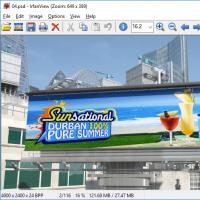 The best programs for reading and editing: do without Photoshop psd extension than open
The best programs for reading and editing: do without Photoshop psd extension than open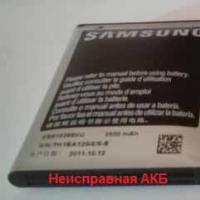 Why is my phone charging slowly?
Why is my phone charging slowly?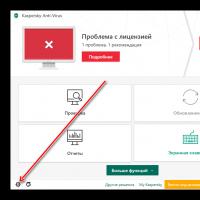 How to add a folder to an exception in Kaspersky How to add exceptions to a program in Kaspersky
How to add a folder to an exception in Kaspersky How to add exceptions to a program in Kaspersky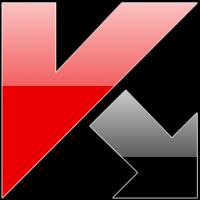 Installing Kaspersky Security Center Installing the Administration Server kaspersky security center 10
Installing Kaspersky Security Center Installing the Administration Server kaspersky security center 10 How to take a screenshot on a computer: All possible ways How to take a screenshot of a photo
How to take a screenshot on a computer: All possible ways How to take a screenshot of a photo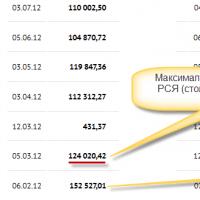 Screenshot - what is it and how to make a screen Ways to take a screenshot on a computer
Screenshot - what is it and how to make a screen Ways to take a screenshot on a computer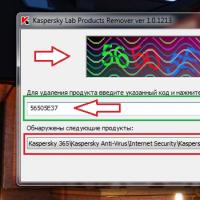 Free renewal of the Kaspersky Anti-Virus license Suspension of protection from Kaspersky Gadget
Free renewal of the Kaspersky Anti-Virus license Suspension of protection from Kaspersky Gadget